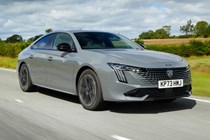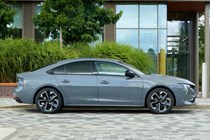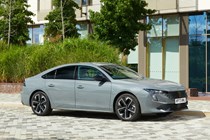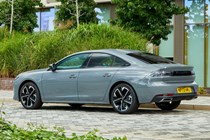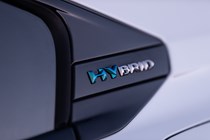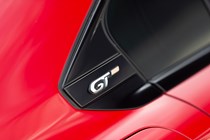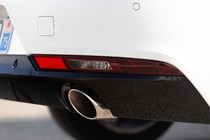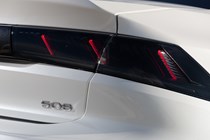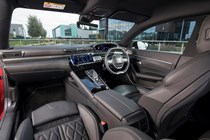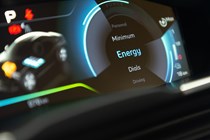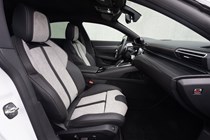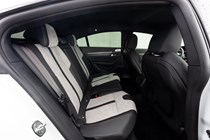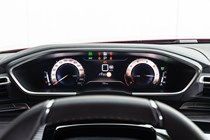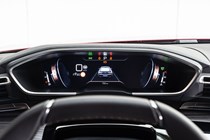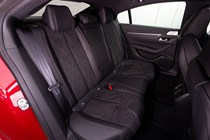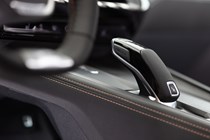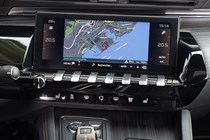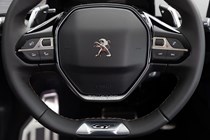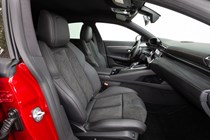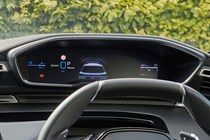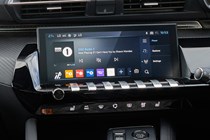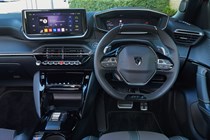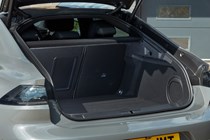
Peugeot 508 engines, drive and performance
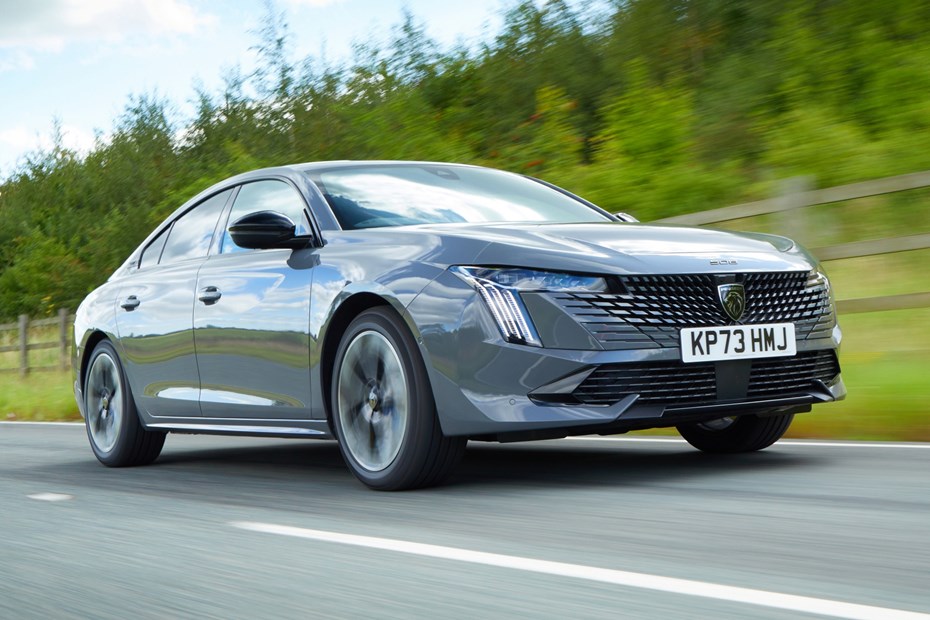
- Two petrol and three diesel engines
- Most models fitted with an automatic gearbox
- Plug-in hybrid on the way
Petrol engines
For a number of years you could get a 180hp and 225hp 1.6-litre turbocharged petrol, there’s now a single 1.2-litre three-cylinder turbo. Like every other 508 it’s automatic only and develops 130hp. If that doesn’t sound like a great deal, it’s because it isn’t; performance is adequate at best and there are times you’ll definitely want more.
Diesel engines
Although you used to be able to get a 1.5-litre and two 2.0-litre diesels, the range is now petrol and plug-in hybrid only.
Electric and hybrid engines
The Hybrid 225 uses a 1.6-litre petrol engine producing 180hp and 300Nm of torque, along with an electric motor producing 110hp. Combined power output is 225hp and is delivered through the front wheels via an eight-speed automatic gearbox.
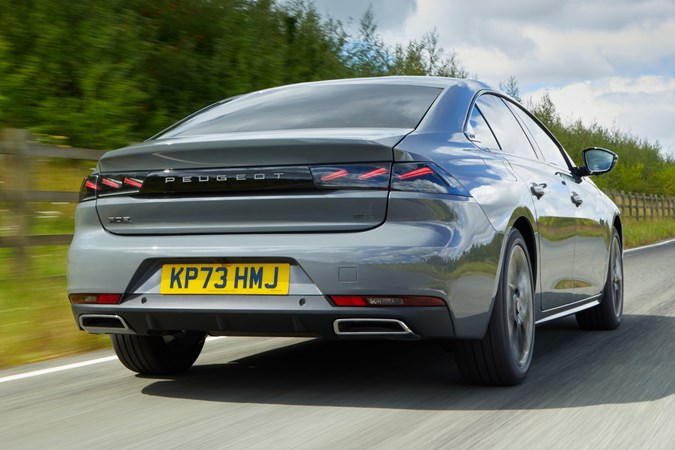
Progress is moderate, but the strong electric motors are quick at generating momentum from low speeds, leaving the engine to kick in higher up in the rev range. The added bonus of this means the gruff-sounding engine doesn’t have to shout as loudly, taking back a step in day-to-day driving. It’s almost as if it’s there to assist the electric motors, rather than be relied upon most of the time.
Flick through the drive modes and you can select between Electric, Comfort, Hybrid and Sport. Sport mode combines both the petrol engine and electric motor for the best performance and helps liven up the 508’s acceleration in everyday driving. This doesn’t transform the car’s performance out on the open road, but is more useful around town, where the electric motors make the most difference from low speeds.
Nudge the gearlever down from D into B mode and this activates the car’s regenerative braking system, slowing the car down without the need to apply the brake pedal. This energy is used to charge up the battery and, while the amount accrued doesn’t make a significant difference in charge levels, it certainly adds to the convenience of driving in stop-start traffic as you simply drive and slow down using the accelerator pedal. A higher performance Peugeot 508 PSE is available with 360hp, and that gets its own review.

What’s it like to drive?
- Unsettled ride
- Good body control with little roll
- Not the most entertaining car to drive
The small steering wheel gives an initially agile feel and suggests the 508 will be easily chuckable down a winding road. The steering’s light, but there’s a decent build-up in weight as you apply more lock, too, adding to the level of interaction. It’ll eventually run out of grip if you really push it, but it takes some doing and most 508 drivers are unlikely to be driving it at full pelt on a twisty B-road.
It’s easier to reach the limits of grip in the heavier plug-in hybrid, but this is hardly the vehicle to hustle down your favourite road anyway. You can certainly try, but it won’t be pretty. Sure, you can make swift progress as the electric motors help nudge you up to speed, but it’s best to drive at a moderate pace as it’s more in line with the hybrid’s relaxed nature.
It’s good advice for all models, as although the 508 doesn’t lean like a Skoda Superb, it doesn’t relish being cornered hard like a BMW 4 Series Gran Coupe.
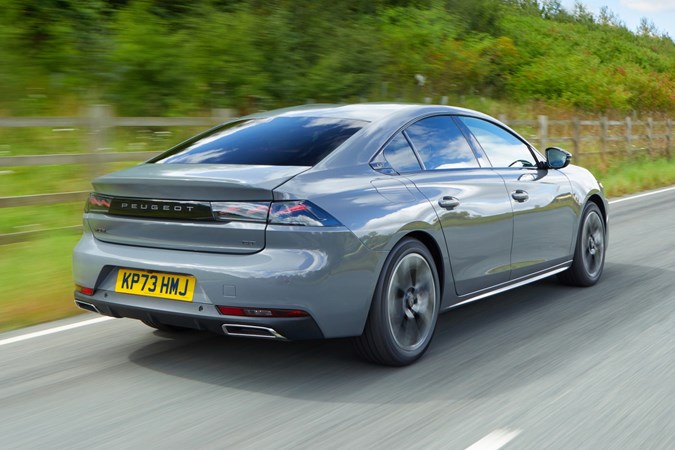
When it comes to the way 508 rides, it never really settles down, even when fitted with smaller wheels. This is disappointing given the stable, but ultimately uninvolving handling. After all, a Superb will go round a corner tidily enough for most and is properly comfortable.
Counterintuitively, cars on 19-inch wheels perform better thanks to their adaptive suspension. This changes the stiffness of the suspension in accordance with the four drive modes: Eco, Comfort, Normal and Sport. The softest setting makes the prow bob up and down a little too much, while Normal does a good job of smoothing things out without feeling too wallowy.
Switch to Sport mode, however, and the ride is unpleasantly harsh on our British roads – and since there’s little added benefit to the 508’s handling, it’s not a mode you want to stick with for very long.
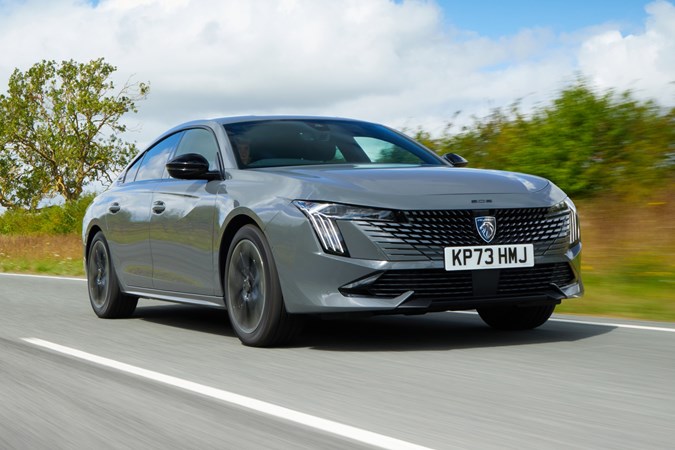
The rest of the 508’s refinement is a bit of a mixed bag. Road noise is ever present, accompanied by wind noise around the door mirrors and at the top of the frameless doors. The engines remained hushed at all speeds, though, whichever one you choose.
The plug-in hybrid is more impressive than the rest of the range, absorbing bumps and isolating them from the cabin more effectively. We suspect the additional 280kg in weight from the added hybrid hardware has a factor, but it’s also quieter when it comes to engine noise and road noise, too. This is good news as the conventional petrol engines generate quite a harsh note, and here it’s relatively muted.


